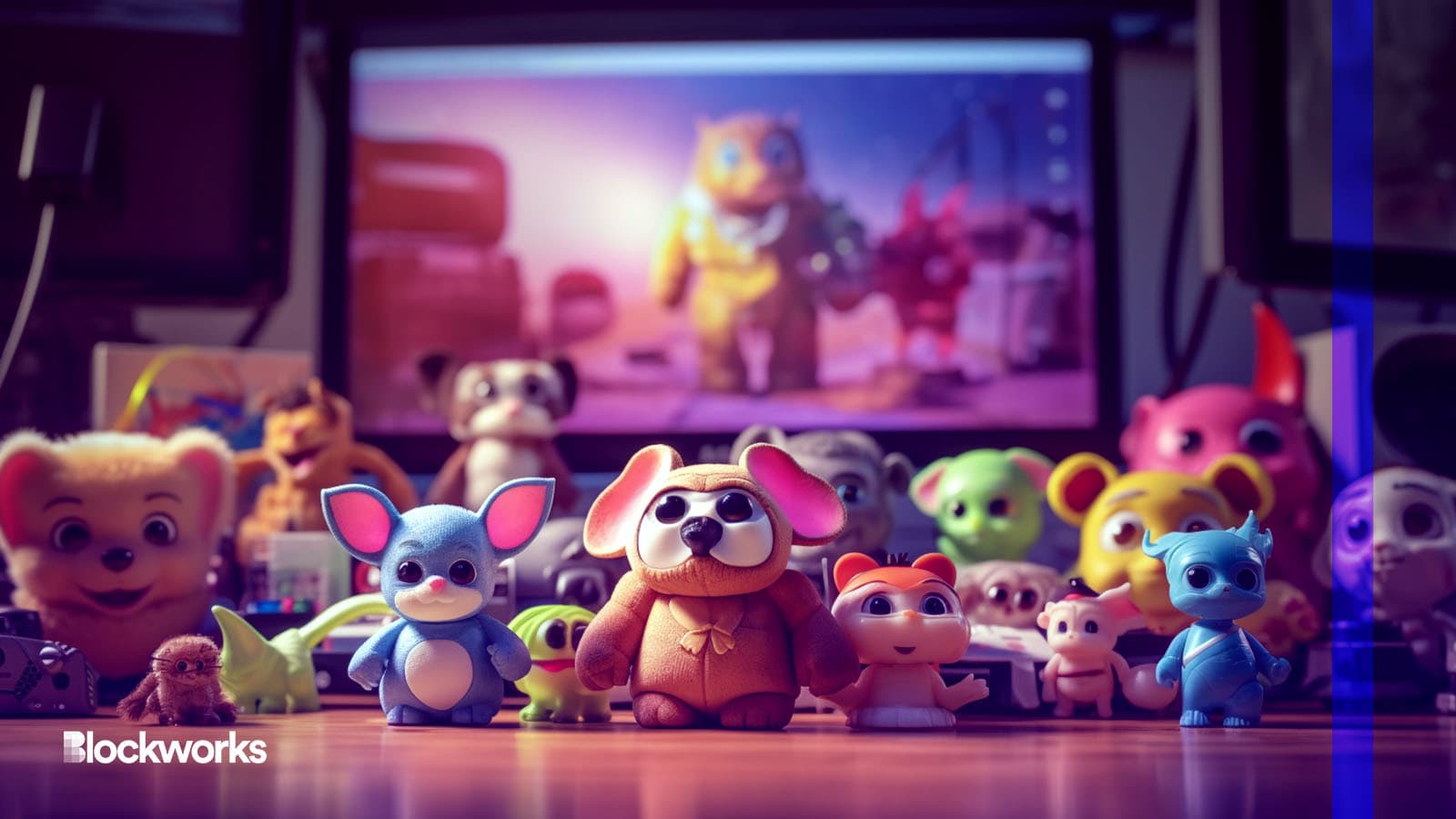Don’t use your NFT for that
If using an NFT doesn’t improve gameplay, why bother

Midjourney modified by Blockworks
They call them “collectibles” for a reason.
Whether it’s Louis Vuitton bags or Funko Pops, people like to accumulate stuff. The reasons for collecting are numerous. Some do it for pleasure; some are riding seasonal trends. Others are seeking status or prestige, or to show loyalty to their teams or favorite artists.
In the crypto world, people collect Bored Apes and CryptoPunks because of their high value — and maybe because they look cool.
Depending on market demand, many of these collectibles can fetch huge sums of money. They can also hold huge sentimental value for their owners.
But here’s the thing – none of these NFT collectibles has an actual purpose or, as we say in crypto, utility. The vast majority don’t provide special access to anything or solve any real problems. They’re simply pieces of physical or intellectual property that, for one reason or another, people want to own.
So here’s a question: Then why do Web3 games spend so much time, energy and money trying to find use cases for NFTs? Do they really need one?
Is it enough that people just like to collect them?
It is.
Web3 game builders need to stop trying to peddle NFTs as ill-defined solutions to ill-defined problems. Instead of trying to invent dubious technical use cases for NFTs, Web3 game studios that want to make sought-after non-fungible assets should focus on creating games, characters and intellectual property that people love — and mint NFTs based on those instead.
No need to add friction for gamers
NFTs are unique digital assets stored on a blockchain, providing verifiable proof of ownership and authenticity, and — like much of blockchain technology — frequently described as a solution looking for a problem.
Still, they do serve one important purpose: NFTs enable the ownership, trading and monetization of digital creations such as artwork, music, videos and virtual real estate. In other words, they are vehicles of collection: They allow people to own stuff, be it physical or digital. And in the gaming world, developers have come up with a bunch of other ways to use NFTs in games.
But while these uses may seem cool and innovative on the surface, the truth is that assigning technical use cases to NFTs often creates more friction than it removes. In fact, many of these functions can be accomplished — even improved — without blockchain.
Don’t focus on the tech that gets in the way
Here’s the thing, most players just aren’t interested in new ways to use NFTs, unless they directly improve the gameplay experience or provide other value. This is the only thing anyone thinking about using an NFT in a game’s build needs to think about.
If using an NFT does not improve gameplay, don’t bother.
The thing that gives NFTs value — both in and out of the gaming world — is what they represent: association with an artist’s work, a piece of physical or digital real estate, or a popular brand. 99% of Pudgy Penguin owners don’t use them for anything — they just like collecting them.
Read more: Web3 has an identity crisis on its hands
Instead of pouring time and money into creating NFTs for interoperability and access, why not use those funds to partner with a well-known artist in the space to create something rare and unique? The key is to focus on boosting the reputation of your brand — and as a result, make your NFTs irresistible to people who simply love what you make.
In other words, your strategy here is brand building, not utility building.
That’s what any kind of company looking to incorporate NFTs into what they build needs to think about: What kinds of digital assets are people interested in owning, why, and how can we create more of them.
We need to put our energies into figuring out what players want to collect — and then give it to them. Don’t let using technology for technology’s sake get in the way.
Start your day with top crypto insights from David Canellis and Katherine Ross. Subscribe to the Empire newsletter.
Explore the growing intersection between crypto, macroeconomics, policy and finance with Ben Strack, Casey Wagner and Felix Jauvin. Subscribe to the Forward Guidance newsletter.
Get alpha directly in your inbox with the 0xResearch newsletter — market highlights, charts, degen trade ideas, governance updates, and more.
The Lightspeed newsletter is all things Solana, in your inbox, every day. Subscribe to daily Solana news from Jack Kubinec and Jeff Albus.





